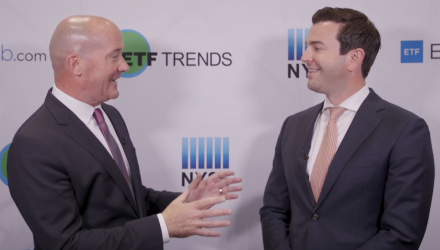As a way to better target quality companies, investors can look to an exchange traded fund strategy that screens for companies with a strong economic moat or competitive advantage to keep them protected through any market condition.
“‘Moat’ investing, long-term sustainable, competitive, outperformance – that’s what a moat is. That’s what our ETF is trying to capture, but it goes a little beyond just a wide moat company. It is really encompassing valuation into the story. That’s where the people of Morningstar make all the difference,” Patrick Finn, Managing Director, VanEck, said at the Morningstar Investment Conference.
VanEck offers a line of ETF strategies that try to capture companies that exhibit wide economic moats. The VanEck Vectors Morningstar Wide Moat ETF (NYSEArca: MOAT) implements Morningstar’s economic moat rating to identify strong companies with wide economic moats. The VanEck Vectors Morningstar International Moat ETF (NYSEArca: MOTI) takes a similar moat rating methodology to select overseas component holdings. The recently launched VanEck Vectors Morningstar Global Wide Moat ETF (GOAT) implements its economic moat indexing methodology with an all-encompassing global exposure.
The economic moat investment strategy can help investors achieve improved long-term, risk-adjusted return by focusing on quality companies that help limit downside risk while still participating in potential gains.
The Morningstar Economic Moat Rating methodology assign an economic moat rating to companies, but it also focuses on those that show attractive valuations or are more attractively priced. Beyond factor effects, stock selection is also an important driver as the underlying indices combine both quality and valuation to help investors potentially generate improved returns.
According to Morningstar’s indexing methodology, there are five sources of economic moats: Intangible assets that include brand recognition to charge premium prices. Second, switching costs that make it too expensive to stop using a company’s products. Third, network effects that occur when the value of a company’s service increases as more use the service. Fourth, a cost advantage that helps companies undercut competitors on pricing while earning similar margins. Finally, efficient scale associated with a competitive advantage in a niche market.
An investor would end up with the most attractively priced stocks among the companies that have garnered the “wide moat” rating.
Watch the full interview between ETF Trends CEO Tom Lydon and Patrick Finn:
For more ETF-related commentary from Tom Lydon and other industry experts, visit our video category.







